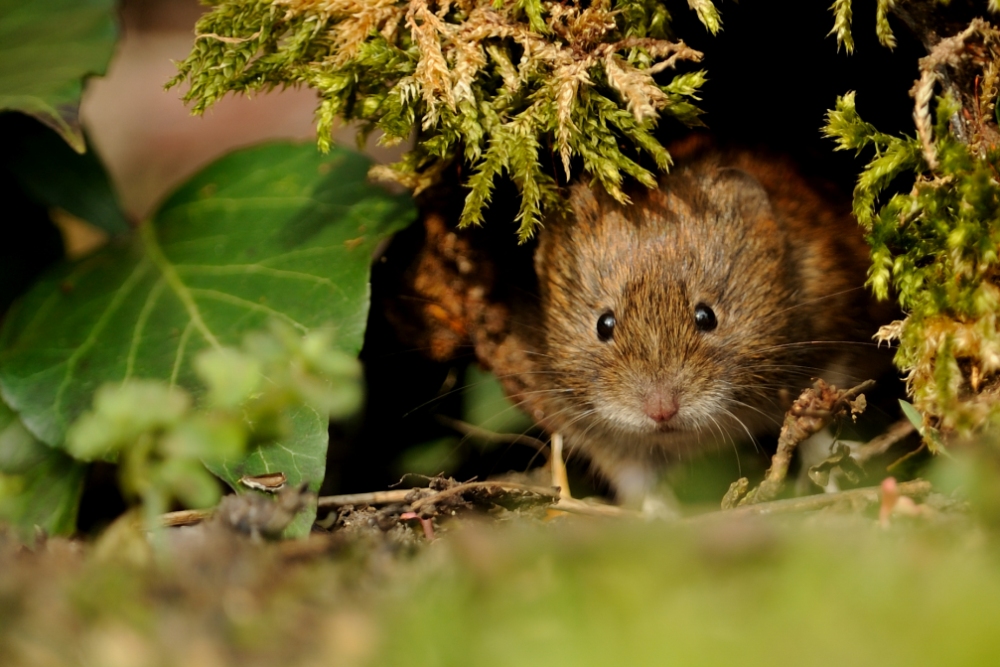Bank vole

Status
Native, common and widespread
Population
27,400,000
Scientific name
Myodes glareolus
The smallest of the UK’s voles, bank voles have a reddish-chestnut coat with a dirty white underside. The bank vole tail is under half the length of their body and they have a blunt nose with small eyes and ears. At first sight, they can be confused with field voles, which are greyer, or wood mice, which have a longer tail and bound rather than scurry. Bank voles are active during both the day and night, and forage over distances up to 50 metres. Males sometimes travel further to find a mate. They make their nests in shallow burrows that they dig just beneath the ground, which they line with leaves, grasses, moss or feathers. They are very nimble climbers and often climb up bushes to nibble fruit and buds.
Head-body length: 8 – 12cm
Tail length: Less than half the body length
Weight: 14 – 40g
Lifespan: Up to 18 months
Reproduction
Litters of 3 – 5 blind, hairless young are born between April and October and become independent within nine weeks but over half of those born early in the season will die before they are four months old.
Diet
Grass, roots, fruit such as apples, seeds, and also insects and earthworms.
Habitat
Broadleaf woodland, scrubland, hedgerows and sometimes gardens where there is plenty of ground cover and food.
Predators
Tawny owls, weasels and foxes.
Threats
Habitat loss and agricultural pesticide use.
Conservation status
GB Red List: Least Concern (LC).
Population size and distribution
GB population: 27,400,000. Bank voles are widely distributed throughout Britain. They’re also present in the south west of Ireland, where they were accidentally introduced in the 1950s.
Did you know?
A close relative (subspecies) of the bank vole is present on Skomer Island off the south west coast of Wales. The Skomer vole arrived there hundreds of years ago and is twice the size of its mainland relative.
